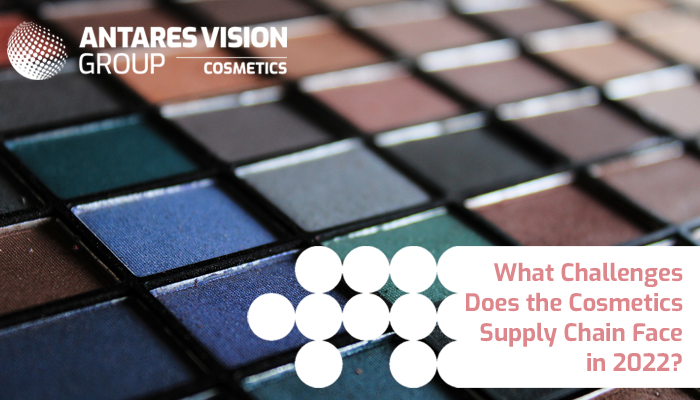In our last two blog posts of 2021, we talked about the global problem of counterfeit cosmetics and who investigates them when they’re discovered. For our first article of 2022, we’re talking about cosmetics supply chain challenges the industry should consider as we make our way through what will likely be another trying year for the global supply chain.
Please note that this isn’t a ranked list or a “countdown” to the No. 1 cosmetics supply chain challenge. That said, let’s get started.
Five Cosmetics Supply Chain Challenges
Counterfeits and fakes
Yes, we’ve been talking about counterfeits a lot lately. But they’re one of the cosmetics supply chain challenges that bears repeating and re-emphasizing. Cosmetics and perfumery products are consistently among the Top 5 products “targeted by counterfeiters,” with fakes accounting for just under 10 percent of all customs seizures in 2019.
There are two main reasons why counterfeits are a challenge. First, they are a public health threat because they can contain hazardous materials. Second, they are a major threat to companies’ brand security. Traceability in a digital supply chain, including serialization and real-time environmental monitoring solutions, is your best defense. Read more in our brand protection blog series.
Sustainability
Sustainability is top of mind for all supply chain stakeholders. Consumers are one of the main drivers here, as they’re demanding accountability from the brands they buy. And if they don’t get it, they’re happy to take their business elsewhere. More and more regulatory bodies are also calling for sustainability.
Traceability, visibility, and transparency are how you can prove to consumers and regulators that you’re operating a sustainable supply chain with environmentally friendly/conscious processes and products. We wrote a good summary about “The Trifecta” of traceability, visibility, and transparency in our “Top Supply Chain Trends of 2021” post. Read that for more details about this important trend.
Refrigeration/Climate control
Some cosmetics must be shipped at specific temperatures. If the temperature dips or rises beyond that specified point — an event known as an excursion — products can be damaged, resulting in loss of revenue and, possibly, a knock to your brand reputation. This is a risk that’s simply not worth taking.
Climate control should be part of a larger real-time environmental monitoring solution. We call ours Integrated Monitoring. It’s an Internet of Things (IoT)-enabled solution that seamlessly integrates with your supply chain to monitor more than a dozen conditions, including temperature, on land, sea, and air.
Ethical considerations
One of the first cosmetics supply chain challenges is sourcing high-quality ingredients. (Indeed, this is a challenge in most industries; the concerns here should be on everyone’s radar.) In addition to the ethics involved in creating and maintaining a sustainable, environmentally friendly supply chain, cosmetics companies must contend with the issues of child labor and trafficked workers —even slavery.
To illustrate: mica and palm oil. The former is a sparkling mineral used in eye shadow, lipsticks, and highlighter; the latter is used for moisturizing or texture effects.
A 2016 report from the Amsterdam-based nonprofit Centre for Research on Multinational Corporations (SOMO) found that more than 20,000 children are forced to work in mica mines while their families live in severe poverty. Similarly, palm oil, the global market for which is expected to reach a global value of $57.2 billion by 2026, is plagued by human rights problems.
Companies must be vigilant. A digital supply chain with end-to-end traceability, visibility, and transparency is crucial.
Market changes
The cosmetics industry must continue to address changes in three areas: technology, regulations, and consumer sentiment. Of course, these changes are happening within the context of the pandemic, which arguably makes them more challenging.
In “The Global Cosmetics Market”, a white paper we published at the end of 2021, we get into the details of these challenges. Here are the broad strokes:
-
- Technology is changing how consumers buy products and even how they interact with them. To adapt, companies can employ tools such digitalization and IoT devices to expand their supply chains without compromising efficiency.
- Regulations are an ongoing concern in every industry. For example, in the United States, the Personal Care Products Act, if passed, would amend the Federal Food, Drug, and Cosmetic Act and give the Food and Drug Administration more oversight of production and authority over cosmetics products, including the power to demand recalls.
- Everchanging consumer sentiment means cosmetics companies must pay attention to what people want, expect, and demand. This makes supply chain traceability, visibility, and transparency vital to success.
Final thoughts
We ended our “Top Supply Chain Trends of 2021” blog post with a questionnaire. These questions absolutely pertain to cosmetics supply chain challenges:
-
- Are you keeping up with the trends we talked about today?
- Are there gaps and blind spots in your supply chain?
- Are counterfeits a problem in your industry?
- Are you doing everything you can to protect your brand?
- Are you actively reaching out to your customers to bring them closer to your brand?
- Are there compliance deadlines on the horizon?
- Are you certain your current supply chain solutions are truly optimal?
- Are you using your supply chain as a strategic asset?
We encourage you to contact us to discuss why your supply chain is the key to keeping up with challenges. Our digital supply chain experts can share a short demo of our award-winning Traceability System that will clearly show why it’s the best solution for cosmetics companies.
We also encourage you look through our blog. To learn more about how transparency works, for example, read our “Transparency Trilogy,” which unpacks transparency in the global seafood supply chain. You can also subscribe to our quarterly newsletter, which tracks the latest news and trends in traceability, regulations, and other industry news. Find the subscription form at the bottom of any page on our website.





